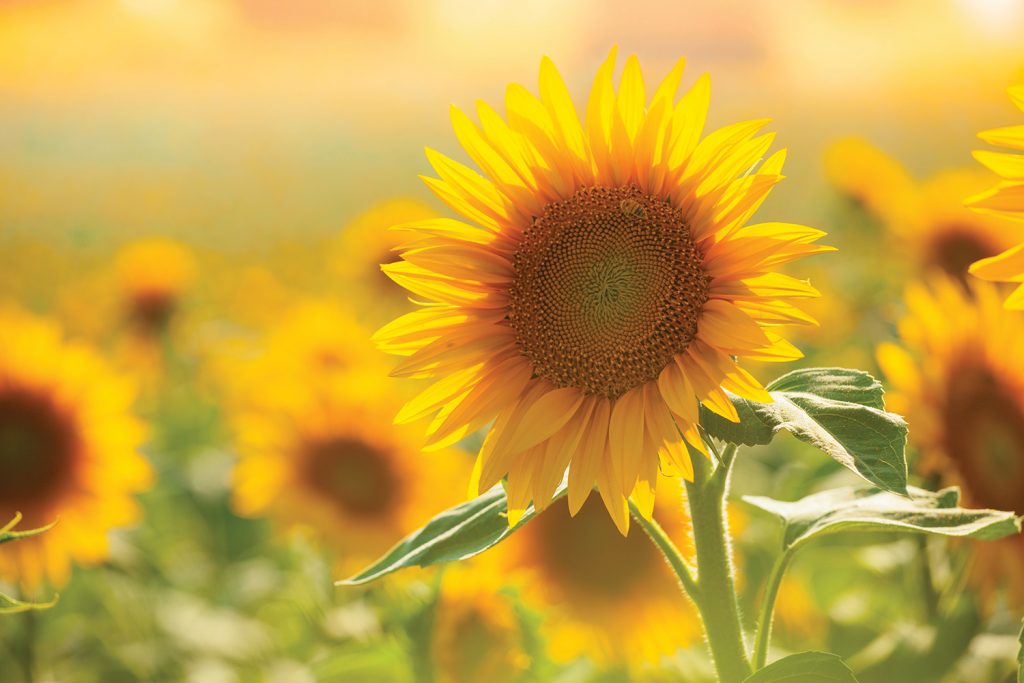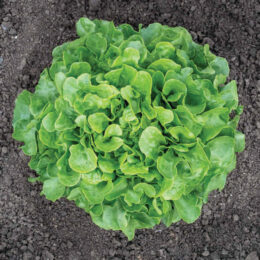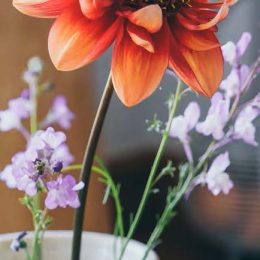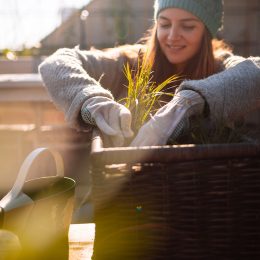
By B. Rosie Lerner
As recovered COVID-19 patients were being wheeled from some Indiana hospitals to family members waiting to take them home this spring, they were cheered by hospital workers and serenaded with the eternally cheerful Beatles tune, “Here Comes the Sun.”
You needn’t have experienced “a long cold lonely winter” — or spring — to appreciate the warmth and brightness the sun brings. And that goes for what sunflowers can bring to your garden, too. Sunflowers are traditional in the typical Midwestern garden. But modern hybrids have greatly expanded the palette of colors, sizes, and whether you want something pretty to look at or seed for the birds.
Gardeners will find two different types of sunflowers available from garden centers and online catalogs: Those grown for their edible seeds, and those grown primarily as ornamentals. Traditional sunflowers are generally quite tall (over 5 feet) with bright yellow blooms. Modern cultivars now offer a range of orange, gold, lemon-yellow, bronze, amber, mahogany-red and even white.
Another new development is more highly branched plants that may carry numerous smaller flower heads, rather than one large head. Some cultivars have been bred to fill the center with additional rows of ray-type flowers, giving a fuller, double-flowered appearance. And for smaller gardens and containers, you’ll find sunflowers ranging in height from dwarf types (1-2 feet). Many of the newer garden types are intermediate height (3-5 feet).
Sunflowers are easy to grow in just about any type of garden soil and climate. Choose a sunny location for best flowering. Sunflowers are generally considered to be a warm-season crop plant.
So, whether to look at or for seed, sunflowers just have something that, after a long, cold lonely time, returns smiles to our faces.
To harvest sunflower seeds for eating or for feeding the birds:
- Cut the head when at least two-thirds of the seeds are mature; the outer shell of the seed will be hardened, and the back of the head will be brown and dry.
- You may need to protect your harvest from the birds by covering the maturing head with cheesecloth, netting or a paper bag.
- Cut the head from the plant, leaving 1-2 feet of stem attached.
- Hang the heads in a paper or cloth bag to catch the falling seeds, and place in a warm, well-ventilated area for a few weeks to cure.
B. Rosie Lerner is the Purdue Extension consumer horticulturist and is a consumer of Tipmont REMC. Questions about gardening issues may be sent to “Ask Rosie,” Indiana Connection, 8888 Keystone Crossing, Suite 1600, Indianapolis, IN 46240-4606, or use the form at IndianaConnection.org.



